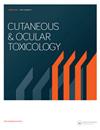A national analysis of systemic adverse events of beta-blockers used for glaucoma therapy.
IF 1.3
4区 医学
Q3 OPHTHALMOLOGY
引用次数: 0
Abstract
PURPOSE To evaluate systemic complications for timolol, carteolol, levobunolol, and/or betaxalol by using an FDA Federal Adverse Event Reporting System (FAERS). METHODS We evaluated FAERS for adverse events associated with β-blocker use for glaucoma. All reported symptoms were reviewed to identify systemic adverse events and to detect safety signals, defined as information on a new or known side effect that may be caused by a medicine. We used the proportional reporting ratio (PRR), reporting odds ratio (ROR), empirical Bayes geometric mean (EBGM), and information component (IC) as a part of a disproportionality analysis comparing the frequency of β-blocker symptoms with all other adverse event reports. We considered a signal to be detected when all four disproportionality analysis metrics were positive. RESULTS We found 10,500,309 total adverse event reports from the FAERS database 2004-2022Q3, which included 8,793 case reports with a primary suspect of a β-blocker use for glaucoma. 1,838 unique adverse symptoms were reported were associated with β-blocker. Regarding outcomes, there were 165 (1.88%) reports of disability, 671 (7.63%) reports of hospitalisation, and 1,934 (21.99%) reports of some other unspecified complication. Regarding adverse events, the most reported general, cardiac, and respiratory symptoms were respectively dizziness (n = 281), bradycardia (n = 145), and dyspnoea (n = 195). 256 (2.91%) cases of death were reported. We found significant signals on bradycardia (n = 145), complete atrioventricular block (n = 38), and bronchospasm (n = 23). No allergic, endocrine, constitutional, or gastrointestinal symptoms generated positive signals. CONCLUSION β-blocker use in glaucoma therapy can be rarely associated with serious systemic and life-threatening complications.对用于青光眼治疗的β-受体阻滞剂全身不良反应的全国性分析。
目的通过使用 FDA 联邦不良事件报告系统 (FAERS),评估噻吗洛尔、卡替洛尔、左布洛尔和/或倍他洛尔的全身并发症。方法我们评估了 FAERS 与使用 β 受体阻滞剂治疗青光眼相关的不良事件。我们对所有报告的症状进行了审查,以确定系统性不良事件并检测安全信号,安全信号是指可能由药物引起的新的或已知副作用的信息。我们使用了比例报告比 (PRR)、报告几率比 (ROR)、经验贝叶斯几何平均数 (EBGM) 和信息成分 (IC) 作为比例失调分析的一部分,比较 β 受体阻滞剂症状与所有其他不良事件报告的频率。结果我们从 FAERS 数据库 2004-2022Q3 中找到了 10,500,309 份不良事件报告,其中包括 8,793 份主要怀疑为青光眼使用 β 受体阻滞剂的病例报告。其中有 1,838 例报告的不良症状与 β-受体阻滞剂有关。在结果方面,165 例(1.88%)报告了残疾,671 例(7.63%)报告了住院,1,934 例(21.99%)报告了其他一些未说明的并发症。在不良反应方面,报告最多的全身、心脏和呼吸系统症状分别是头晕(281 例)、心动过缓(145 例)和呼吸困难(195 例)。报告死亡病例 256 例(2.91%)。我们发现心动过缓(145 例)、完全性房室传导阻滞(38 例)和支气管痉挛(23 例)有明显信号。结论 在青光眼治疗中使用β受体阻滞剂很少会引起严重的全身性并发症和危及生命的并发症。
本文章由计算机程序翻译,如有差异,请以英文原文为准。
求助全文
约1分钟内获得全文
求助全文
来源期刊
CiteScore
3.30
自引率
6.20%
发文量
40
审稿时长
1 months
期刊介绍:
Cutaneous and Ocular Toxicology is an international, peer-reviewed journal that covers all types of harm to cutaneous and ocular systems. Areas of particular interest include pharmaceutical and medical products; consumer, personal care, and household products; and issues in environmental and occupational exposures.
In addition to original research papers, reviews and short communications are invited, as well as concise, relevant, and critical reviews of topics of contemporary significance.

 求助内容:
求助内容: 应助结果提醒方式:
应助结果提醒方式:


